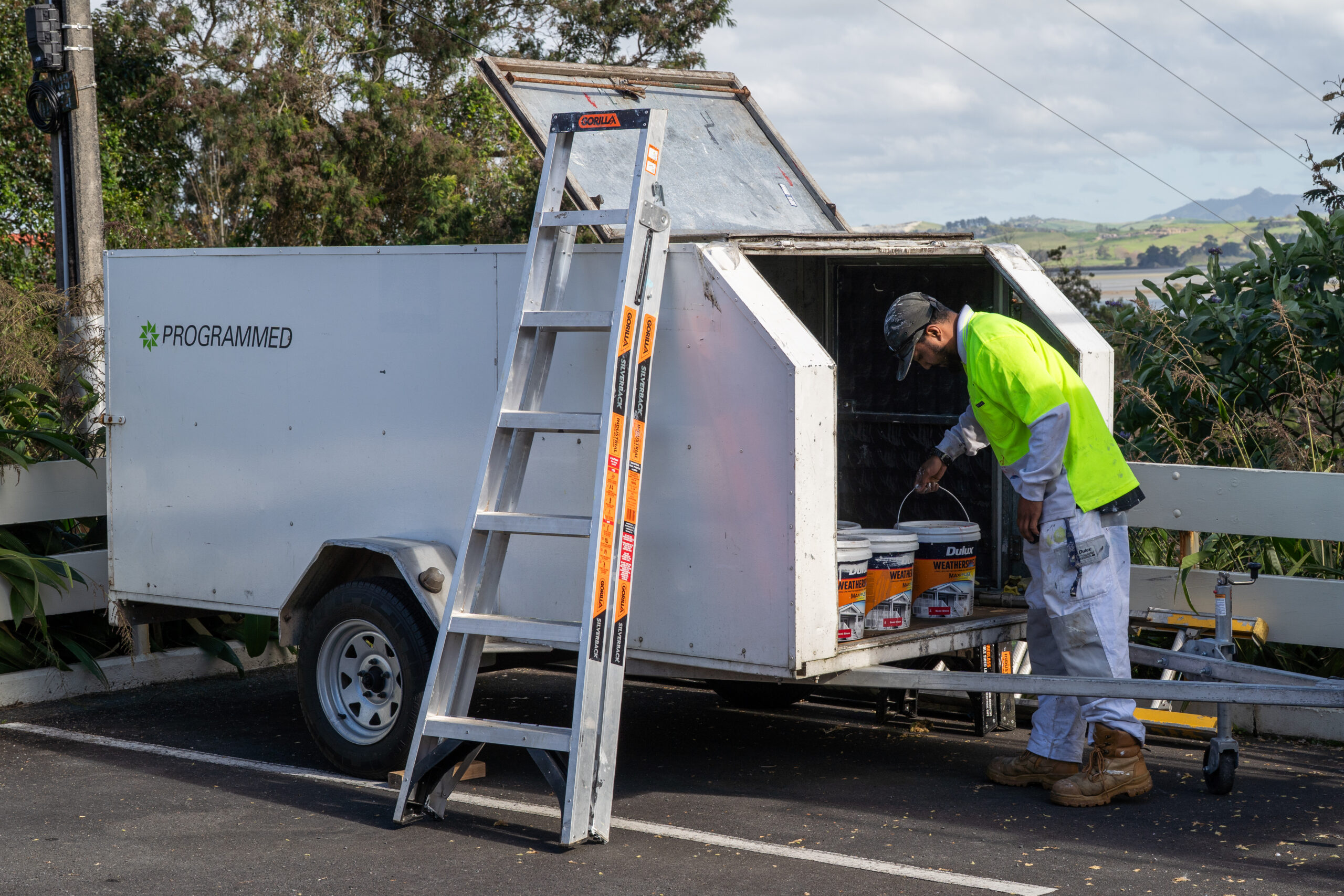Tips from commercial painting professionals to help with your DIY painting problems. Programmed Property Services are the largest employers of painters in Australia and New Zealand. We have a huge knowledge base we can draw from to answer any painting related question. This month, we look at what causes cracking and flaking paint, and how to fix it.
by Nathan D’Couto

Our commercial painting professionals are trained to overcome various problems in their day-to-day work. The aim of this series of blog posts is to offer assistance with common paint problems through the experience we have gained.
To start this off, I will look a common problem with painting: cracking and flaking paint.
Cracking and flaking paint is typically the splitting of a dry paint film through at least one coat. Eventually this will lead to the complete failure of the paint. Early signs of the problem include hairline cracks followed by flaking and paint chipping.
Possible Problems
* Low quality paint that has inadequate adhesion and flexibility.
* Painting under cool or windy conditions that make oil based (enamel) paints dry too fast.
* Poor surface preparation, especially when the paint is applied to bare wood without priming.
Solution
It is possible to correct cracking that doesn’t go right down to the substrate by removing loose and flaking paint with a scraper or wire brush. The next step is to sand the area with a light grade sandpaper to feather the edges, and it is highly recommended to prime the area with an acrylic sealer binder. These days many paints claim to be self priming, however, our commercial painting professionals still recommend using a sealer primer for these areas prior to top-coating.
If cracking does go down to the substrate it is recommended to remove all of the paint by scraping, sanding and the use of a heat gun (but ensure you have your gloves, dust mask and safety glasses on when doing so).
Follow this by priming and top coating with a premium grade acrylic paint suitable for the area you are working on (e.g. internal or external acrylic). Also, just remember to take time and think about safety before you start a job and ensure you have adequate PPE.
If you have a painting question of your own and would like a professional’s opinion, please comment or tweet us via our twitter account, @programmedps.




